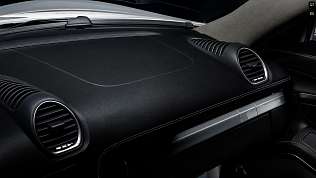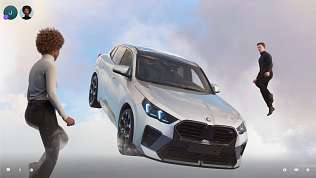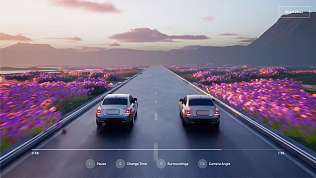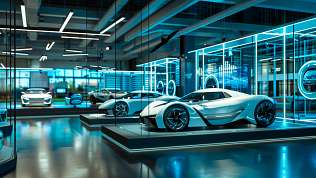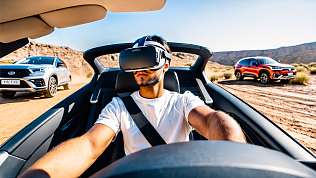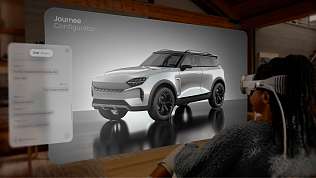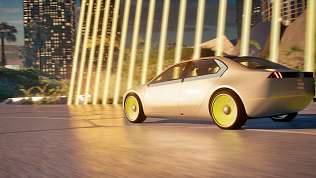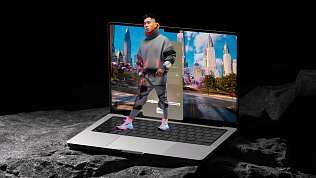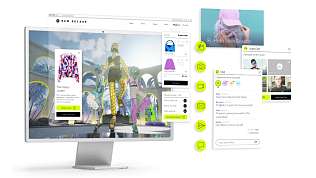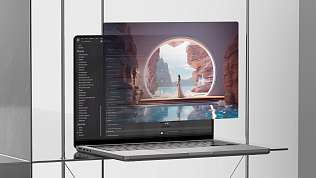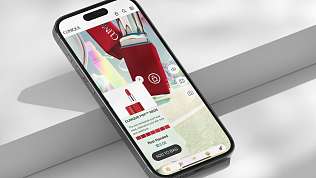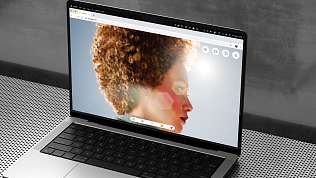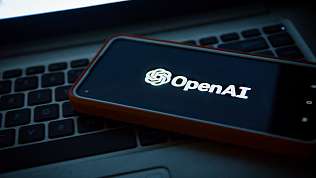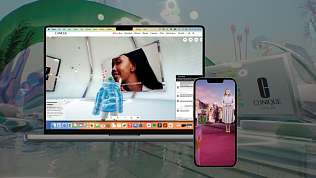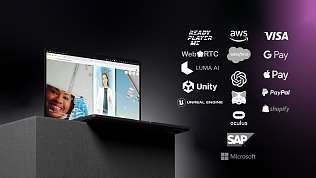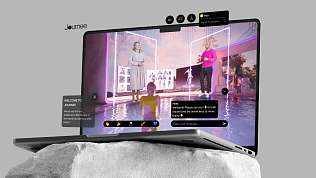Where Digital and Physical World Collide: XR and Immersive Virtual Experiences Used In Automotive Industry
XR is transforming automotive experiences, enhancing customer engagement, training, design, and marketing.
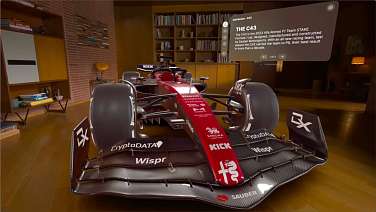
The automotive industry is at the forefront of technological innovation, continuously evolving to meet the demands of a digitally connected world. As consumers seek more immersive and interactive experiences, the integration of extended reality (XR) technologies has emerged as a game-changer. By blending the physical and digital worlds, XR is revolutionizing how we design, market, and experience automobiles. This article delves into the current trends, future predictions, and practical applications of XR in the automotive sector, showcasing how these cutting-edge technologies are reshaping the industry. From virtual showrooms to advanced employee training and beyond, discover the transformative potential of XR and its benefits across the automotive value chain.
Current Trends and Future Predictions in Extended Reality (XR) for the Automotive Industry

Virtual, augmented, and mixed reality technologies are rapidly transforming various industries, with the global XR market projected to surpass $1.1 trillion by 2030. Fortune Business Insights estimates the market size to grow from $183.96 billion in 2024 to $1,706.96 billion by 2032, with a CAGR of 32.1%. Mordor Intelligence forecasts the XR market to reach $472.39 billion by 2029, growing at a CAGR of 34.94%. This robust growth highlights the expanding role of XR technologies across different sectors.
In the automotive sector, the adoption of extended reality technologies is accelerating, driven by the need for innovative customer experiences, employee training, and product development. According to Gartner, mixed reality technologies are currently in the "Slope of Enlightenment" phase of the Hype Cycle, indicating they are gaining broader adoption and understanding.
Key Adoption Drivers
-
Technological Advancements: Improvements in hardware, software, and content creation tools are making VR, AR, and MR more accessible and user-friendly.
-
Proven Use Cases: Successful implementations and case studies from automotive companies are demonstrating the value and potential of extended reality technologies.
-
Metaverse Integration: The emergence of the metaverse is driving the adoption of extended reality technologies as a gateway to immersive virtual experiences.
-
Cost Reduction: As extended reality technologies mature, the associated costs are expected to decrease, making them more accessible to a broader range of automotive companies.
-
Competitive Advantage: Early adopters of extended reality technologies in the automotive industry may gain a competitive advantage by offering innovative and engaging customer experiences.
Major Players and Devices
Key players in the XR market include Qualcomm, Microsoft, Varjo, HTC, Meta, Vuzix, and Apple. Major devices encompass VR headsets (Meta Quest, HTC Vive, PlayStation VR), AR glasses (Microsoft HoloLens, Vuzix Shield), smartphones, tablets, and game consoles with VR/AR support, along with various software development kits (SDKs). Additionally, the Apple Vision Pro stands out as a significant MR device, offering advanced spatial computing capabilities.
Understand VR, AR, MR, and XR at Once

As the landscape of digital technology evolves, it’s essential to understand the various immersive technologies that are shaping our interactions with the digital and physical worlds. Here’s a breakdown of the key concepts:
Virtual Reality (VR)
Virtual reality (VR) means immersing yourself completely in digital content. By wearing a headset, users are transported to a digital world, entirely replacing their physical environment with virtual experiences. VR is a fully immersive technology, secluding the user to visualize only digital content.
Augmented Reality (AR)
Augmented reality (AR) creates a digital window through devices like tablets or smartphones. Users look through this window to see digital content overlaid on their physical surroundings. AR combines the physical and virtual worlds by overlaying digital information onto the user’s environment, typically via a two-dimensional display.
Mixed Reality (MR)
Mixed reality (MR) merges both virtual and augmented reality. With MR, users wear a headset that immerses them in digital content while remaining aware of their physical surroundings. This allows interaction with both physical and digital objects simultaneously. MR recognizes its surroundings, enabling digital content to interact with the real world in three dimensions. Apple calls it spatial computing.
Extended Reality (XR)
The terms virtual, augmented, and mixed reality are encompassed under the broader category of extended reality (XR). XR describes different technologies that visualize digital content in various ways, providing a spectrum of immersive experiences.
Successful Case Studies and Opportunities of Extended Reality (XR) in the Automotive Industry

Let's review how automotive OEMs have already leveraged AR and VR technologies. This will provide a clearer understanding of existing applications and the opportunities for optimization with XR.
-
Audi: Audi has implemented AR and VR technologies for various applications, including virtual showrooms, product configurators, and employee training. Their "Audi VR Experience" allows customers to explore vehicles in detail and customize them virtually.
-
BMW: BMW has leveraged AR for marketing campaigns, enabling customers to virtually place and interact with 3D models of vehicles in their real-world environments. They have also implemented VR for employee training and design collaboration.
-
Ford: Ford has utilized VR for vehicle design and prototyping, enabling engineers and designers to collaborate and visualize concepts in a shared virtual environment. They have also implemented AR for employee training and maintenance procedures.
-
Porsche: Porsche has developed an AR app that allows customers to virtually place and configure Porsche models in their surroundings, enhancing the buying experience and enabling personalized product exploration.
-
Volvo: Volvo has implemented VR for safety testing and crash simulations, enabling engineers to analyze and improve vehicle safety features in a controlled virtual environment.

These use cases illustrate the significant benefits of AR and VR technologies, such as enhanced customer engagement, streamlined design processes, and improved training programs. Discover Automotive VR solutions
However, there is ample opportunity to optimize these experiences further with MR since the revolutionary launch of Apple Vision Pro, which can seamlessly integrate digital and physical elements. Deeper integration into the entire value chain across the product life cycle and along the customer journey can save costs and generate revenue more effectively and sustainably.
For example, VR can enhance the design and prototyping phase by allowing engineers to interact with digital models, MR even in a physical space, improving accuracy and collaboration. In customer service, MR can provide virtual assistance and troubleshooting, reducing the need for physical visits and speeding up resolution times. By leveraging MR, automotive companies can create immersive showrooms where customers can experience and customize cars in real-time, whether at home or in a dealership. Learn more
Benefits of applying XR into automotive industry operations

XR technologies offer a range of benefits across various aspects of automotive industry operations. They enhance customer engagement, streamline design and manufacturing processes, improve training and maintenance procedures, and enable innovative marketing strategies. By integrating XR into their operations, automotive companies can drive innovation, increase efficiency, and provide superior customer experiences.
Before You Start - Challenges and Considerations in Implementing XR Solutions

Implementing XR solutions in the automotive industry comes with several challenges and considerations that need to be addressed to ensure successful adoption and operation:
-
Technology Adoption and User Experience: Ensuring a seamless and intuitive user experience is crucial for widespread adoption of XR technology in general and specifically the automotive industry. Users must be able to navigate and interact with XR environments easily for the technology to be effective.
-
Content Creation and Management: Developing high-quality, immersive content for XR experiences can be resource-intensive and requires specialized skills and tools. Creating realistic and engaging XR content demands significant investment in both time and resources.
-
Data Privacy and Security: Implementing robust data privacy and security measures is essential when collecting and handling data through XR platforms. Ensuring that data is protected from breaches and misuse is critical for maintaining customer trust and compliance with regulations.
-
Integration with Existing Systems: Seamlessly integrating these technologies with existing systems, processes, and workflows can be challenging and may require significant organizational changes. It is important to ensure compatibility and smooth operation between new XR solutions and current infrastructure.
-
Cost and Return on Investment (ROI): Implementing XR solutions can be capital-intensive, and measuring the ROI for these technologies may be complex, requiring careful planning and analysis. Companies must define clear KPIs and measure those to justify the initial investment.
By addressing these challenges and considerations, automotive companies can effectively implement XR solutions and unlock their full potential, driving innovation and enhancing customer experiences.
Seamless Interactive Digital Automotive Experience - Recommendations and Best Practices of Extended Reality in JourneeX

Imagine an experience where graphics come to life, performance reaches new heights, and interactive features become more engaging than ever. We harness the transformative capabilities of XR technology, offering a strategic advantage in shaping the next wave of immersive digital experiences.
In the automotive industry, several pain points hinder the customer experience and business operations. The sector often struggles to attract younger, tech-savvy customers who expect cutting-edge digital experiences. Traditional digital interactions frequently fail to engage customers fully, leading to missed opportunities and lower satisfaction. Additionally, the availability of test drive locations and vehicles is often restricted, limiting customer exploration and experience. The car buying process itself can be cumbersome, with customers facing difficulties in obtaining technical details and pricing information. JourneeX technology can address these challenges by providing immersive, interactive solutions enhanced with XR capacity that improve the overall experience for customers and businesses alike.
Transforming the Automotive Buying Experience and Maximize the XR Advantage with JourneeX Immersive Technology

JourneeX extends its virtual world streaming capacity from devices such as mobile, tablet, desktop, and TV to XR devices to transform the automotive buying experience. Journee's immersive virtual experiences are accessible on any device, anytime, anywhere, allowing customers to explore vehicles in a highly engaging and interactive manner, enabling OEMs to implement a truly streamlined omnichannel strategy. Making it the premium choice for enterprises.
The multiplayer interactive configurator enables multiple users to socialize, form fan communities, and collaborate in real-time. Configured cars can then be placed in the customer's real-life environment using XR, providing a tangible and immersive experience. This technology can be leveraged in omnichannel marketing campaigns, product launches, online configurators, digital and physical virtual showrooms, and events, offering a consistent and engaging customer journey.
Furthur reading: Discover the practical applications of MR and VR in the automotive industry. Explore our in-depth articles on how these technologies are revolutionizing customer engagement, design, and more.
